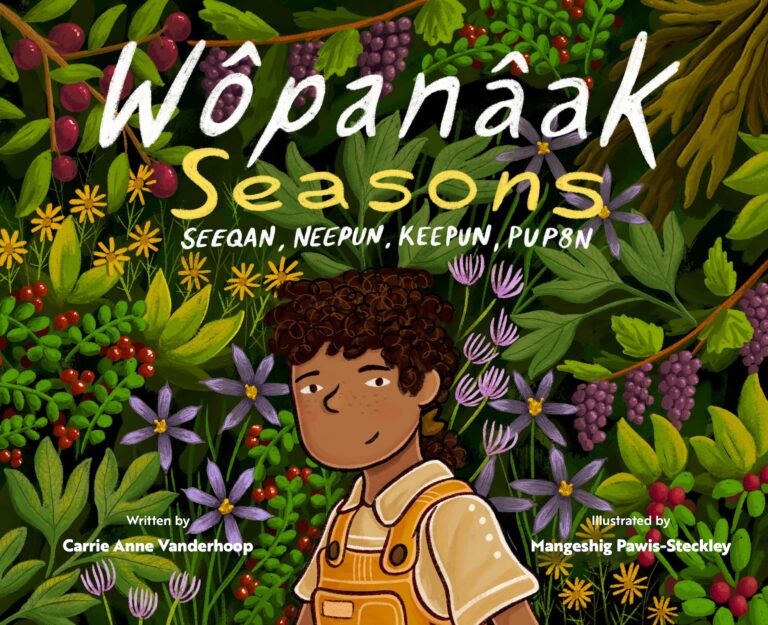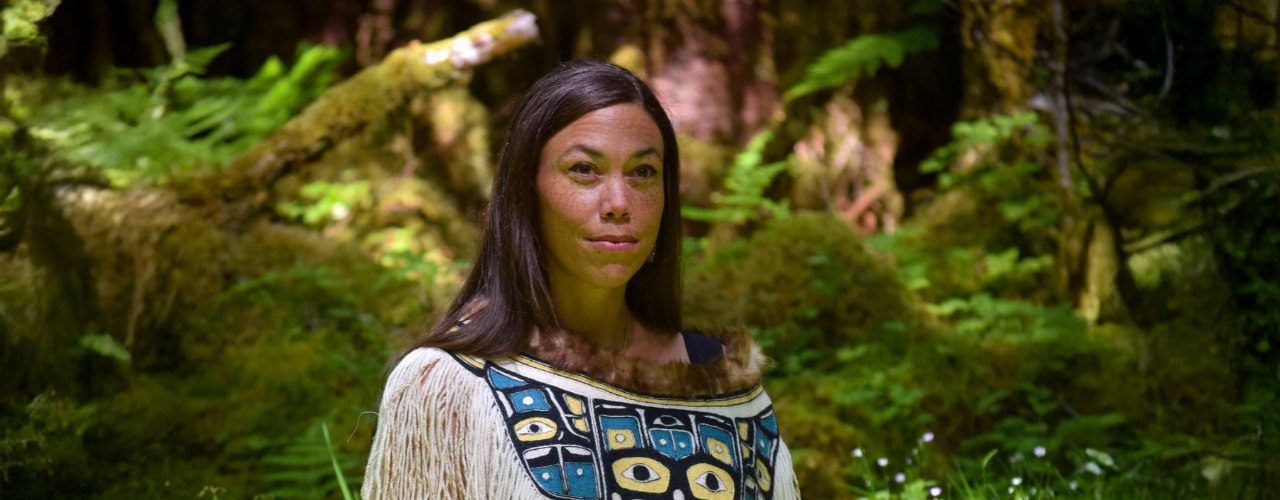Carrie Anne Vanderhoop is of Haida and Aquinnah Wampanoag ancestry and currently lives on Haida Gwaii, where she serves as Director of the Haida Gwaii Institute, part of UBC’s Faculty of Forestry. Vanderhoop also serves on the board of Rediscovery T’alaan Stl’ang, a seasonal youth cultural camp located in a remote area of Haida Gwaii, and has been volunteering on their board of directors for the past six years.
Joining HELP and the ASC
Vanderhoop first joined HELP in 2011 as a maternity leave replacement for the Aboriginal Community Liaison Coordinator. “I was immediately deeply invested in the research that HELP was doing in early years development and school readiness,” she says. What stood out most was HELP’s focus on engaging with Indigenous communities around the Aboriginal-specific data. “I was drawn to their commitment to using the data to improve outcomes for Indigenous children,” she recalls. When her contract ended, Vanderhoop was invited to stay connected with her work as a member of the Aboriginal Steering Committee (ASC). She’s been an active and valued contributor ever since.
Guided by Ancestry, Grounded in Relationships
Vanderhoop’s professional path has largely focused on curriculum and program development in Indigenous education, reconciliation, cultural safety, and systems change. “My heritage inspires me to do this work — being a mother and an aunty, coming from a Haida weaving family, and growing up on the land of my ancestors, both the Haida and Aquinnah Wampanoag,” she shares. “All of this guides and informs my work, pedagogy, and how I live in a good way on this earth.”
Through her work with the ASC, Vanderhoop notes that she has seen firsthand the evolution of HELP’s research and its relationships with Indigenous communities. “Since my arrival at HELP, I have not only witnessed but contributed to the growth and expansion of the research work,” she says. “Through consultation and collaboration with the ASC as well as working closely with the faculty and staff at HELP, new research tools have been developed, and meaningful, trusting relationships have been built.” She frequently references HELP’s model of collaboration with the ASC when advising other organizations seeking Indigenous perspectives.
Challenges in Institutional Spaces
Still, working within post-secondary institutions has not been without challenges. “The values that I hold, more often than not, do not align with the values that university and education institutions are built on in Canada and North America broadly,” she explains. “It is a challenge to make people aware of the inherent racism, harm, and ongoing colonialism that are built right into our systems and structures.” Vanderhoop hopes to see more initiatives that make space to do things differently: to value different knowledge systems equally, uplift more diverse perspectives in leadership roles, and provide adequate funding and infrastructure to support this work towards reconciliation and creating a more just society.
A Life of Teaching, Nurturing, and Advocacy
The impact of her work, both inside and outside of HELP, is deeply rooted in her role as an aunty and educator. “I do this work, as a mother and an Aunty… where I have responsibility for all the children and youth in my community, to do what I can to make them feel seen, cared for, and safe,” she says. Whether through developing Indigenous-focused curriculum or contributing to cultural safety in healthcare and education systems, Vanderhoop is helping to build a future in which Indigenous peoples, especially children and youth, feel respected, valued, and safe in classrooms as well as when seeking healthcare.

Introducing Wôpanâak Seasons: Seeqan, Neepun, Keepun, Pup8n
This commitment to storytelling and connection recently found a new expression with the release of Vanderhoop’s first children’s book, Wôpanâak Seasons. The story is grounded in her own upbringing in Aquinnah (formerly Gay Head), the traditional territory of her Wampanoag ancestors. “I grew up surrounded by family and people in the community that made me feel loved and cared for,” she recalls. From running through the woods to picking flowers and learning about local plants, the book is inspired by the beauty and joy of those childhood experiences. “We didn’t have any speakers of our traditional language when I was growing up, but we held on to our community’s traditions, celebrating Cranberry Day, having community potluck socials, singing, and dancing.”
Vanderhoop had long dreamed of writing children’s books that help young readers build meaningful relationships with the land. When Tradewind Books approached her about writing a story about the Wampanoag people, “I felt like I had been waiting for that email my whole life,” she says. The book also includes Wôpanâak language, in celebration and support of the work of Jessie Little Doe Baird and the Wôpanâak Language Reclamation Project.
A Vision for the Future
Looking ahead, Vanderhoop’s vision for Indigenous children and families is one of reconnection and resurgence. “Families speaking their traditional languages, having access to learning their languages, and getting out on the land as a part of their formal and traditional education,” she shares. She also hopes to see fewer barriers to quality, safe education, and healthcare.
You can support Vanderhoop’s work and storytelling by picking up a copy of her new children’s book, Wôpanâak Seasons, available soon from Tradewind Books.
Wôpanâak Seasons Learn More About Carrie Anne